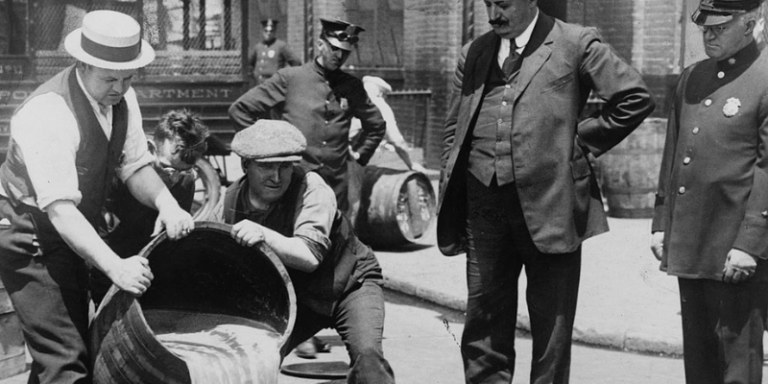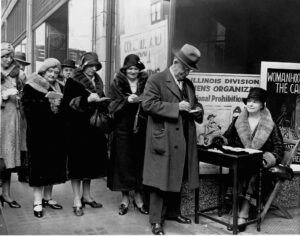Prohibition: The Failed Attempt to Outlaw Drunkenness
The government tried to make people behave better, but it just didn’t work.
By: James Fite | August 23, 2020 | 445 Words

Prohibition (Photo by Universal History ArchiveGetty Images)
Alcohol is highly regulated in the United States today, but did you know it was once illegal? The period of time known as Prohibition began when the 18th Amendment to the U.S. Constitution banned the manufacture and sale of alcohol nationwide in 1920 and ended when that law was repealed by the 21st Amendment in 1933.
The idea of banning alcohol in the United States was nothing new in 1920. During the 1800s and early 1900s, many anti-alcohol groups sprang up, and in many ways, the movement was led by women. Groups like the Women’s Christian Temperance Union fought to abolish slavery, ban alcohol, and give women the right to vote. They were some of the more influential groups, and by the 1920s, all three of these goals were met. But Prohibition ultimately failed, and we’re still paying the price today.
Prohibition Just Didn’t Work
While the statistics show that fewer people drank, a lot of folks simply ignored the laws. To make matters worse, Prohibition gave rise to illegal, hidden bars called speakeasies, which served alcohol to customers in secret. Bootleggers were people who made and transported alcohol during Prohibition. They brought booze into towns to sell at speakeasies. A lot of this alcohol was made as quickly and cheaply as possible, and thousands of people were poisoned by bad drink.
The Rise of Organized Crime

Prohibition Reform (Photo by Library of Congress/Corbis/VCG via Getty Images)
Prohibition helped create organized crime as we know it today. Thousands of gangs sprang up or became more powerful thanks to the money they made selling alcohol. By the 1930s, this had spread everywhere. Rival gangs fought each other – and the police – in the streets with fully automatic weapons.
A Government “Solution” to a Government-Created Problem
President Franklin D. Roosevelt signed the National Firearms Act (NFA) as part of his “new deal for crime.” The NFA was supposed to stop or at least slow the gang violence. It was the first national gun control law, but it was not the last.
Prohibition only lasted 13 years, officially, but in practice, it never fully went away. Even today it is a federal crime to distill any amount of alcohol for human consumption without a distribution license. Guns are heavily regulated, compared to before the 1920s.
Ten states still have dry counties, in which the sale of alcohol is illegal. Nationally, brewing wine and beer at home didn’t become legal again until the Jimmy Carter presidency. Gangs and other organized crime problems never went away. All in all, it was a massive failure that we’re still paying for today.
















